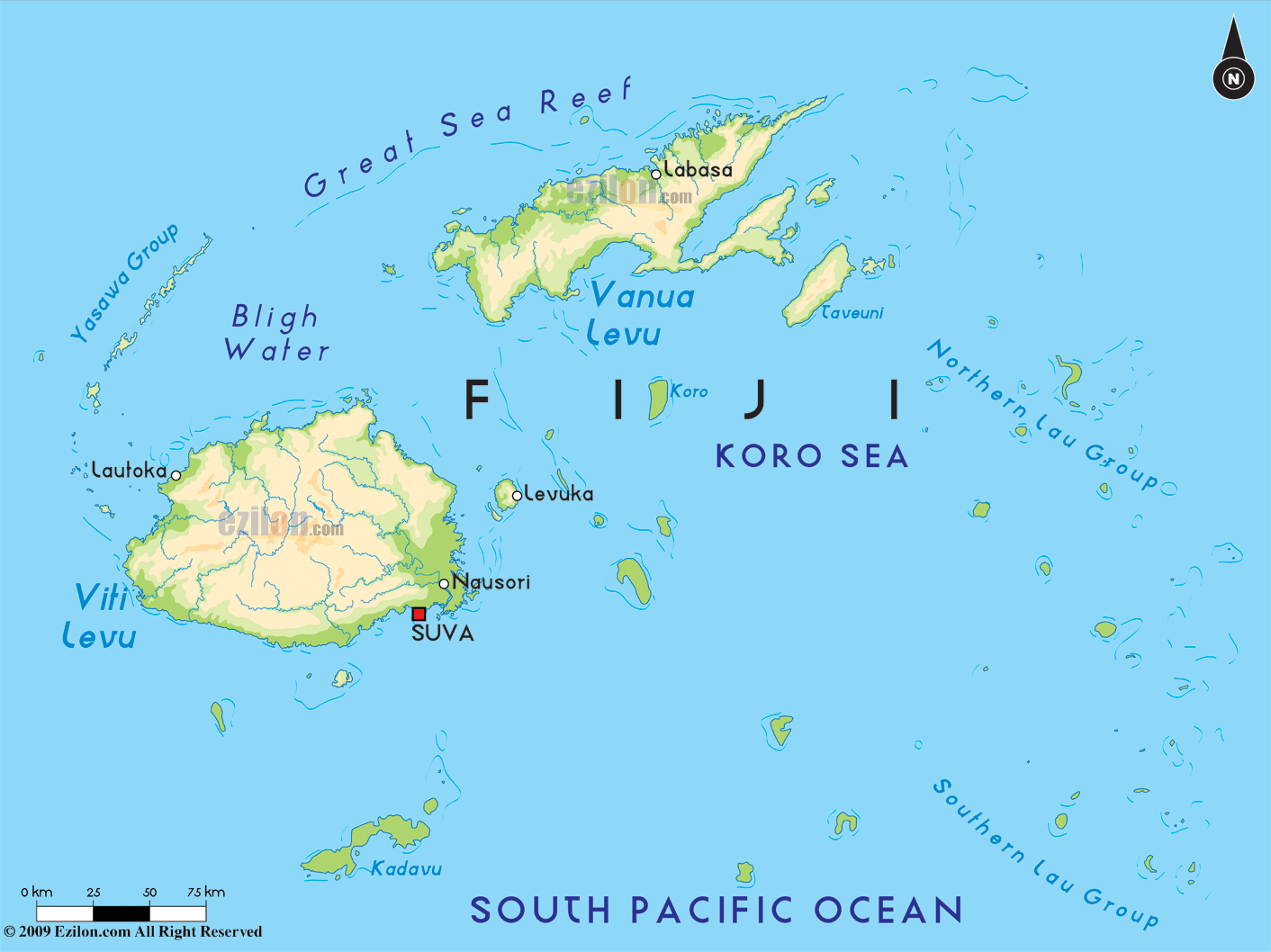
Fiji is another one of the island nations looking to a climate-changed future that’s just around the corner.
Some villages are already relocating inland to avoid the rising sea levels that Fijians have already started noticing:
Vunidogoloa is the first village to be relocated under the climate change program.
Acting Commissioner Northern Alipate Bolalevu said government spent about $879,000 on the relocation project.
“This cost includes the construction of the 30 houses, fish ponds and copra drier, farms and other projects we have set up in the new village site,” Mr Bolalevu said.
“It is to help the villagers earn an income while living in their new village.
(snip)
The effect of climate change has resulted in seawater flowing into the village compound during high tide.
Other villages in the North affected by rising sea level have also been considered for relocation.

Along with transplants — easily portable stringed instruments like the mandolin, guitar, and ukelele — Fiji has a number of unique indigenous instruments, most notably the lali, a large slit drum made from a hollowed log. The larger instruments are used for signaling and announcements, while smaller instruments (the lali ne meke) accompany dance and singing.
Because bamboo is easily found, bamboo stamping tubes are another common instrument. Cut to varying lengths, they’re beaten on mats or on the surface of the ground to accompany singing:
Many different genres in Fijian music are all part of the social fabric and are predominantly indigenous. Perhaps the most complex form of Fijian music is the meke in which voices and dance are combined. Different types of meke include the war dance, men’s club dance, men’s spear dance, as well as the men’s or women’s fan dance, women’s standing dance and the sitting dance performed by men or women. All these meke are group dancers in which the overall appearance and group co-ordination are important. Men’s dance movements are vigorous and virile while women’s are controlled and graceful with lots of hand and body movements.
As much as half of Fiji’s total population is of Indian descent (they call themselves “Findians”), and the musical traditions of the Subcontinent are represented, albeit with a certain island flavor.
The “Fiji Kirtan” is their take on the Hindu devotional song style that has found footholds all over the world.
And here’s a local group performing their own take on a Bollywood number:
As befits a nation at an oceanic crossroads, Fiji has seen more than its share of invasions and incursions, each with its own ingredients to add to the island’s unique syncretic mix of cultures.
Tongan Incursions
Around 1000 AD, the Tongan incursions began and lasted until the Europeans arrived. It’s thought they brought Polynesian culture and languages, still evident today in Fiji.
Colonialism
European settlers starting arriving around 1820 and set up Levuka as the first modern town in Fiji. In 1874, King Cakobau ceded Fiji to the Commonwealth in order to rid debts he had mismanagedly accrued. The British set up plantations including cotton, sugar cane, and copra, and imported indentured labourers from India to work the fields. To ensure the co-operation of the chiefs, the colonial government protected Fijian land rights, and passed a law that forbade land sales to foreigners. This still exists today.

Massive links about FIJI here.
The future looks kind of threatening:
With climate change in Fiji, temperatures have increased, sea level has risen and ocean acidification has been increasing. Climate change is expected to affect the country’s coastal resources through sea level rise, and ocean acidification continues to increase and threaten coral reef ecosystems. There are anticipated impacts on infrastructure caused by the projected increase in the frequency and intensity of cyclones and other tropical storms (MFNP, 2005). Additionally, temperature will continue to increase, rainfall patterns will change, there will be less frequent (but more intense) tropical cyclones, sea levels will continue to rise and ocean acidification will continue.
Projections for all emissions scenarios indicate that the annual average air temperature and sea surface temperature will increase in the future in Fiji. By 2030, under a high emissions scenario, this increase in temperature is projected to be in the range of 0.4–1.0°C. Increases in the average temperature will also result in a rise in the number of hot days and warm nights and a decline in cooler weather.
